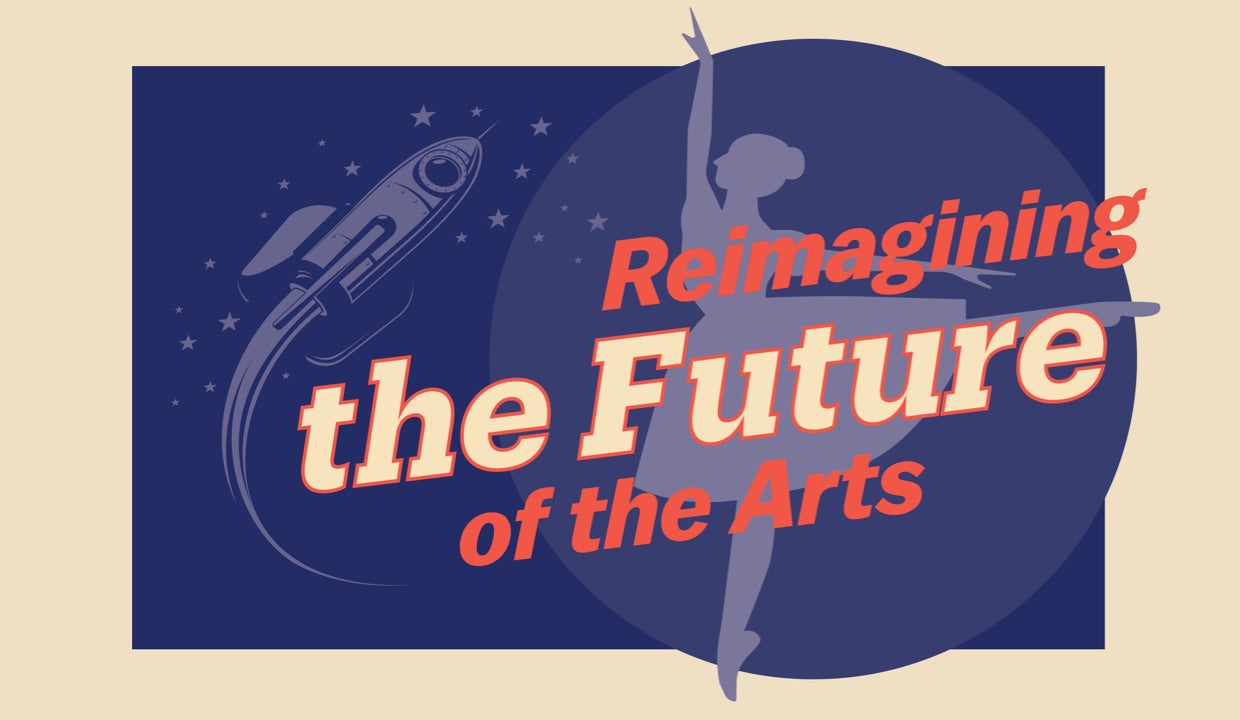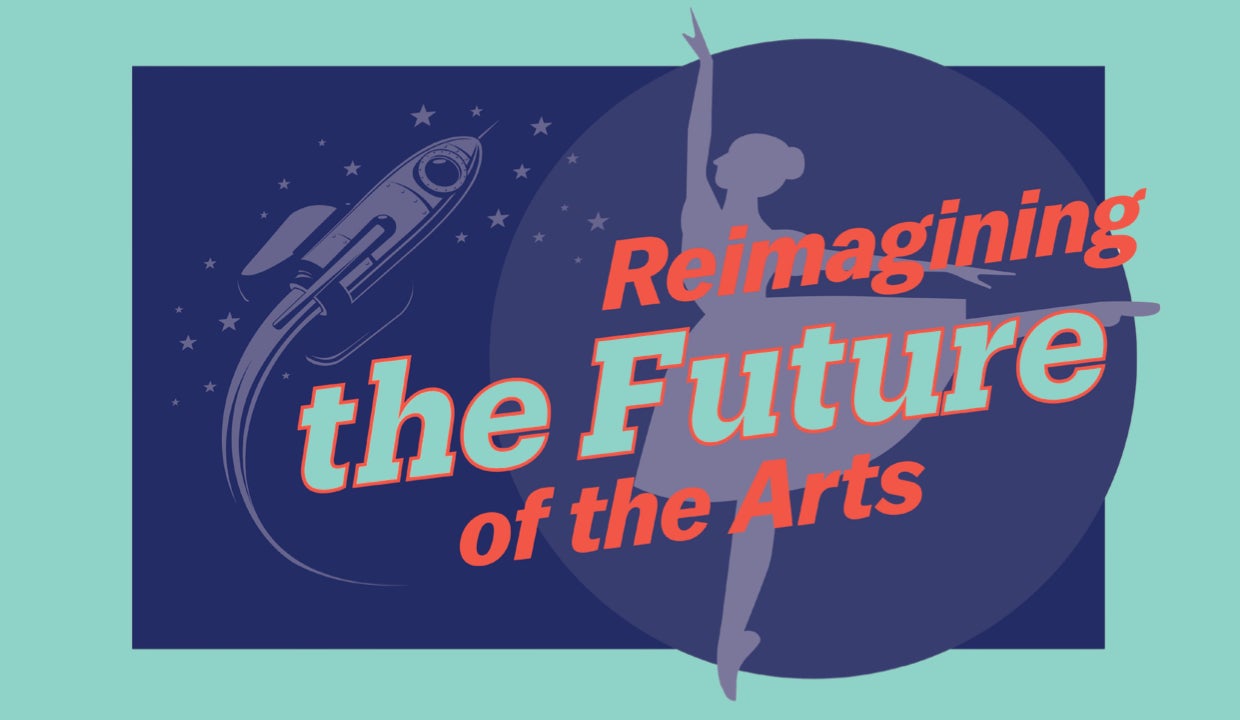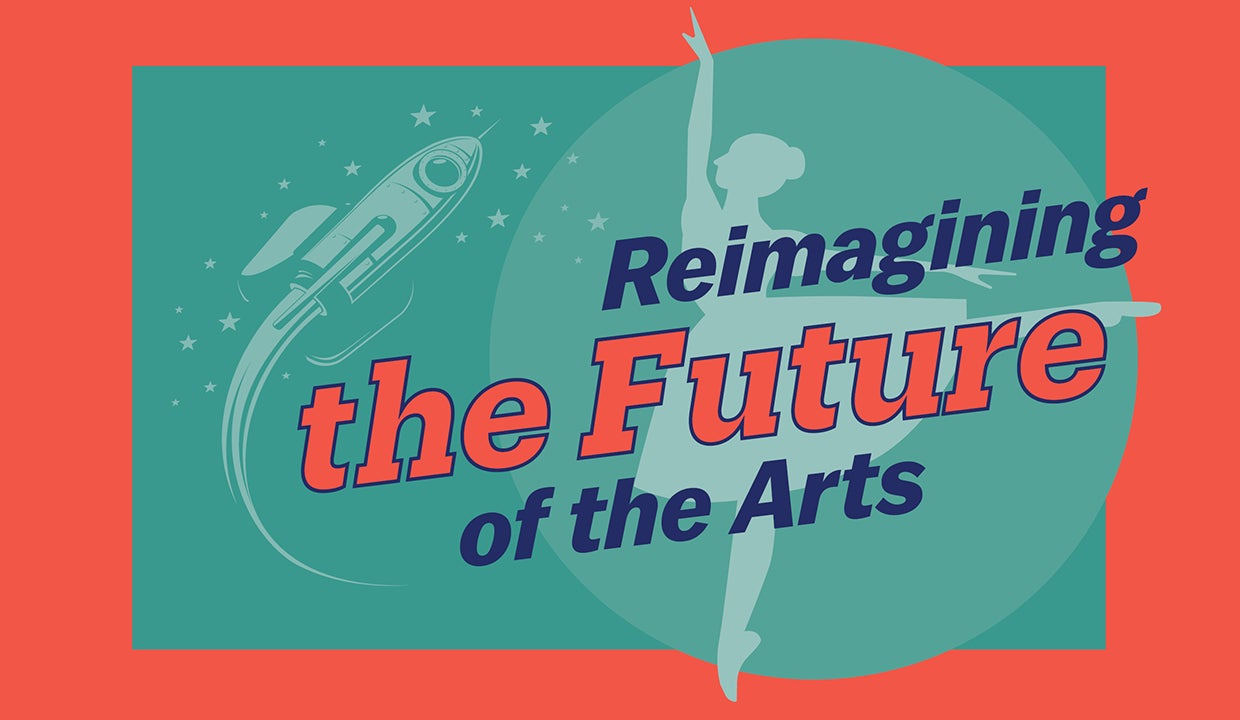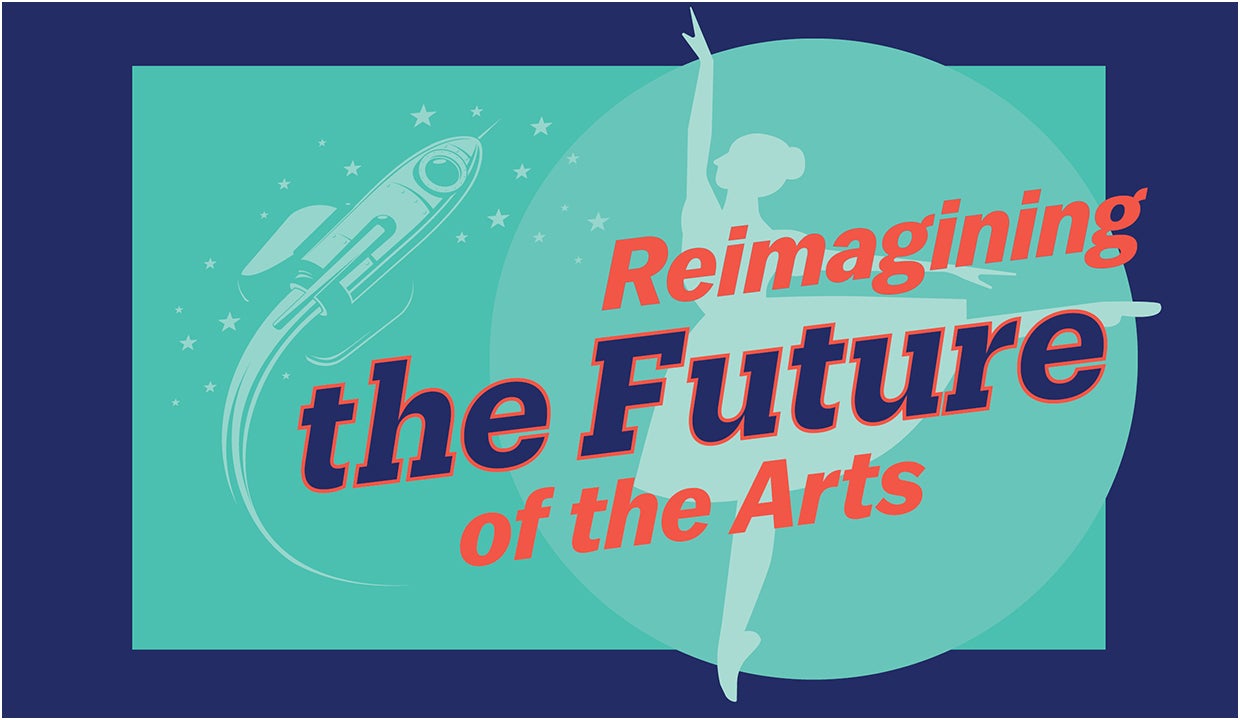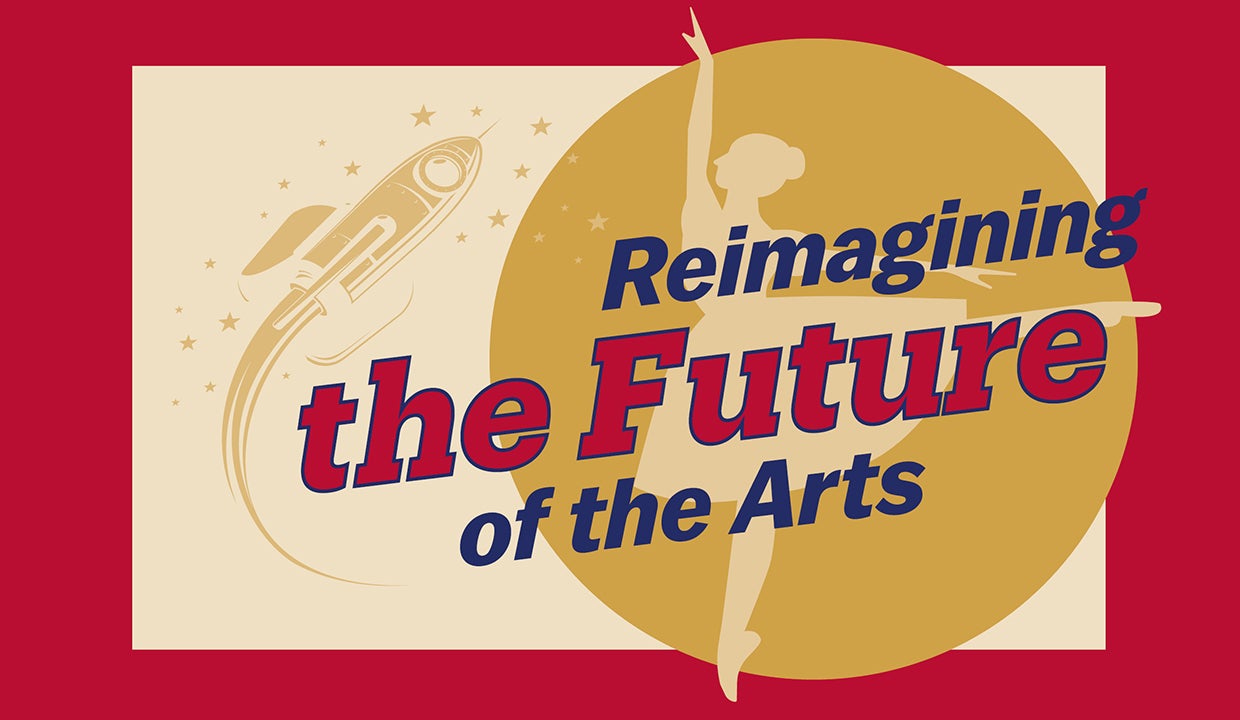For a few weeks in the Twin Cities last fall, the St. Paul-based Theatre Mu presented an interactive exhibit highlighting the work of Asian artists and performers. While audiences could view the exhibit online, it was created so that they could also walk through display stalls, with social distancing, at the Jungle Theatre. In an innovative twist, people could also view portions of the exhibit from the theatre’s street-facing windows.
The collaboration between the two theaters, according to Anh-Thu Pham, Theatre Mu’s managing director, allowed the company to keep many of its set designers, captioners, builders and others on the payroll during the pandemic, while offering some respite to a community in lockdown.
“We were founded with a dual purpose, as a community organization as well as a theatre, and those two threads are woven so deeply into our DNA,” Pham said in a recent panel discussion. “They are part and parcel of everything we do.”
Those threads, it turns out, are not exclusive to the make-up of Theatre Mu. According to a recent report, many organizations that have grown out of and serve the needs of BIPOC communities (Black, Indigenous, People of Color) have managed to build and sustain a loyal base while audiences at more classical, or Eurocentric, organizations have generally been in decline for decades. Zannie Voss, director of SMU DataArts and co-author of a recently published report, The Alchemy of High-Performing Arts Organizations, Part II: A Spotlight on Organizations of Color, said that it is in fact their origins in serving communities long ignored by the mainstream that can provide BIPOC organizations with a tangible degree of audience and community loyalty.
Yet Voss also emphasized that, despite those enviable strengths, BIPOC organizations have rarely been rewarded by funders that have for years sought to encourage precisely the qualities these organizations exhibit—serving diverse audiences, employing many artists of color and a diverse staff, creating more inclusive organizations and reaching into underrepresented and economically disadvantaged communities. “These local organizations are often in competition with the white organizations for funding and they usually lose out to them,” Voss says. “Organizations that are rooted in communities of color receive far less support, recognition and attention both from funders and from society at large.”
Voss presented these and other key findings from the new report, which is based on the experiences of 21 high-performing BIPOC organizations, with a median budget of $1.4 million (Theatre Mu was one of the organizations). The interviews were conducted in August and September of 2020 and included representatives from dance, music, theater, multidisciplinary performing arts and community-based arts organizations. An earlier report from SMU DataArt’s research, The Alchemy of High-Performing Arts Organizations, focused on the successful practices of a wider range of organizations.
Voss and Pham were joined in the panel discussion by representatives from two of the other high-performing organizations in the BIPOC report: Juan Díes, the co-founder and executive director of Sones de Mexico Ensemble, a folk music group based in Chicago, and Blake-Anthony Johnson, the chief executive officer of the Chicago Sinfonietta. The conversation was the fifth in Wallace’s “Reimagining the Future of the Arts” series, which provides a forum to explore pressing questions in the field.
In addition to addressing the question of BIPOC organizations’ community orientation, the panelists discussed the quick improvisation and innovation that helped them navigate the pandemic, particularly the full-on embracing of digital content. They relied on the skills they’d honed working for years with tight budgets while retaining a focus on the communities they serve, and they expressed a vital need for increased funding to expand what organizations can accomplish.
Survival on a shoestring
Díes of Sones de Mexico told the panel that while his group’s performances have always attracted a broad audience, unbound by geography or culture, audiences have grown even larger with digital performances during the pandemic. But because he is the sole staff member, Díes said, “capacity is a big issue.” He runs the company’s website and educational programs and also arranges new music performances.
Although Díes is used to wearing all of these administrative hats, he said he has received no additional funding to do so and sometimes finds it a challenge.
Pham added that Theater Mu shifted to producing digital performances just days after the shutdown. Since then the company has produced more than 40 events, but she said it could not keep up at that pace. “We needed to take a breath,” she said.
Chicago Sinfonietta, too, has succeeded in extending its reach internationally, finding new audiences for virtual performances in more than 40 countries and enrolling interns digitally from Lebanon and Dubai, according to Johnson. But, he said, the strains on the organization are a constant concern. This has led the Sinfonietta to drop some priorities, while remaining true to the its mission of training BIPOC musicians and organizational leaders to increase the diversity of orchestras.
He compared the exercise of contending with these limits to juggling balls, some made of glass and some of plastic. Because glass balls would shatter if you let them fall, you keep them up in the air, while you can drop the plastic balls since they will bounce and can be picked up at a later date. “You can do everything, but not all at once,” he said. “You determine what is fundamental and what can wait. You look at what are essentials and what can go for now.”
All of the panelists stressed how challenging it has been to squeeze more from their organizations, which are already stretched thin, and urged funding organizations themselves to pivot towards supporting increased organizational capacity rather than just performances and programs, the traditional focus. “The top challenge we heard in this research was organizational capacity,” said Voss. “It’s a serious issue that brings concerns of staff burnout, low compensation levels, recruitment and retention issues that can inhibit the organizations’ ability to capitalize on the short-term successes and get to a sense of balance.”
She added, “Exclusion from equitable access to capital means many organizations of color that want to grow are denied agency.”
Toward equity in arts funding
According to an article Voss cites in the BIPOC study: “People of color represent 37 percent of the population, but just 4 percent of all foundation arts funding is allocated to groups whose primary mission is to serve communities of color. It is estimated that approximately one in two Americans is low-income or living in poverty but less than 3 percent of arts foundation funding is directed to cultural groups whose primary purpose is to serve these communities.”
Voss said the inequities in funding for BIPOC arts organizations were particularly unfortunate because these organizations have succeeded in achieving some of the critical goals various funders have supported in recent years. For instance, many white organizations have struggled to fulfill goals such as increasing diversity in the art they produce and their audience base, while widening access to underserved communities.
“I heard repeatedly how profoundly relevant these organizations are and that brings me back to how they were founded in the first place,” Voss said. “Usually, there had been no opportunities for artists of color in these communities and these organizations provide that programming. They filled a void, and that sets up a particularly dynamic relationship between the organization and the community. They are funded not just by a few people with deep pockets as much as the whole community having a sense of ownership.”
Johnson said he has learned that when seeking funding, he must devote a great deal of time to educating funders about how the Sinfonietta trains artists of color, helping them launch careers in music, and helps develop administrative leaders of color, as well as how their support of BIPOC organizations can help organizations achieve such important goals. A key, he said, is making funders aware of the strength of the Chicago Sinfonietta in bringing greater diversity and inclusivity to the orchestral world. “It’s a matter of educating people,” he said. “It’s letting them know that there are options for supporting orchestras, people like us. So it’s a matter of access to those funding organizations and then having the time to do that educating.”
Building increased capacity
One of the consistent challenges, Johnson said, is making the case for funds to expand staff and organizational capacity, not just programs. “Yes, a few funders have been mindful of that need, but it’s such a rare thing,” he said. After giving it some additional thought, he said there had been but a single instance when his organization was offered such funding.
“These are communities that do not have a lot of high net worth individuals,” Voss said. “They don’t have wealth to pay high ticket prices, rising ticket prices, and they cannot provide high levels of funding. But in the more Eurocentric, white organizations, individual contributions are plentiful and fund growth.”
She added, “These organizations are in a vicious cycle: we’ll give you less money because you’re smaller but without that money they can’t grow bigger. This is affecting underrepresented communities.”
Díes agreed, recommending that funders consider providing more multiyear grants to build stability into organizations and offer greater opportunities for them to achieve long-term expansion. He also suggested that the requirements built into some grants that recipients attend financial management courses be dropped. “There’s distrust built in there, like we don’t know how to manage money,” he said, insisting that that was incorrect after 23 years of experience, in his case. “The foundations should trust us.”
Pham noted a particular problem: While many funding organizations are willing to support youth education programs, they have been reluctant to fund programs for adults. These sorts of adult-education programs can be especially helpful in training BIPOC artists who are eager to develop careers as actors or stage designers. “That’s a disparity that I run into,” she said.
Voss said the funding challenges are serious but she was still optimistic about the path forward, especially as lockdowns lift, arts venues reopen and arts organizations are able to build on the lessons they have learned from going digital during the pandemic.
“There has been a lapse in how the model is supposed to work,” Voss said. “But the field at large has so much to learn from the strong BIPOC organization leaders. What we don’t want to see any more is one kind of organization pitted against another.”
Top photo: Sones de Mexico Ensemble by Henry Fajardo
Stories from Reimagining the Future of the Arts
